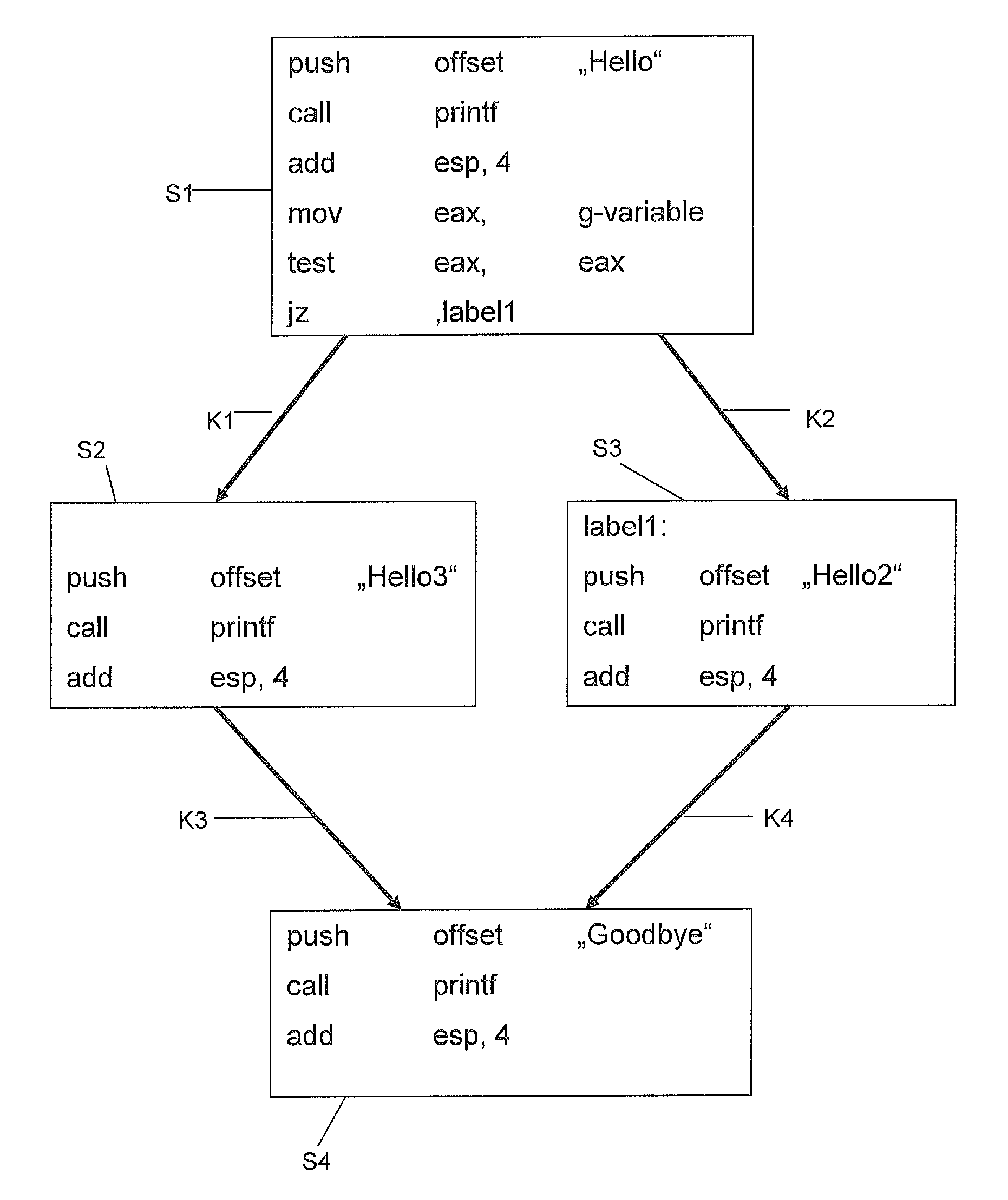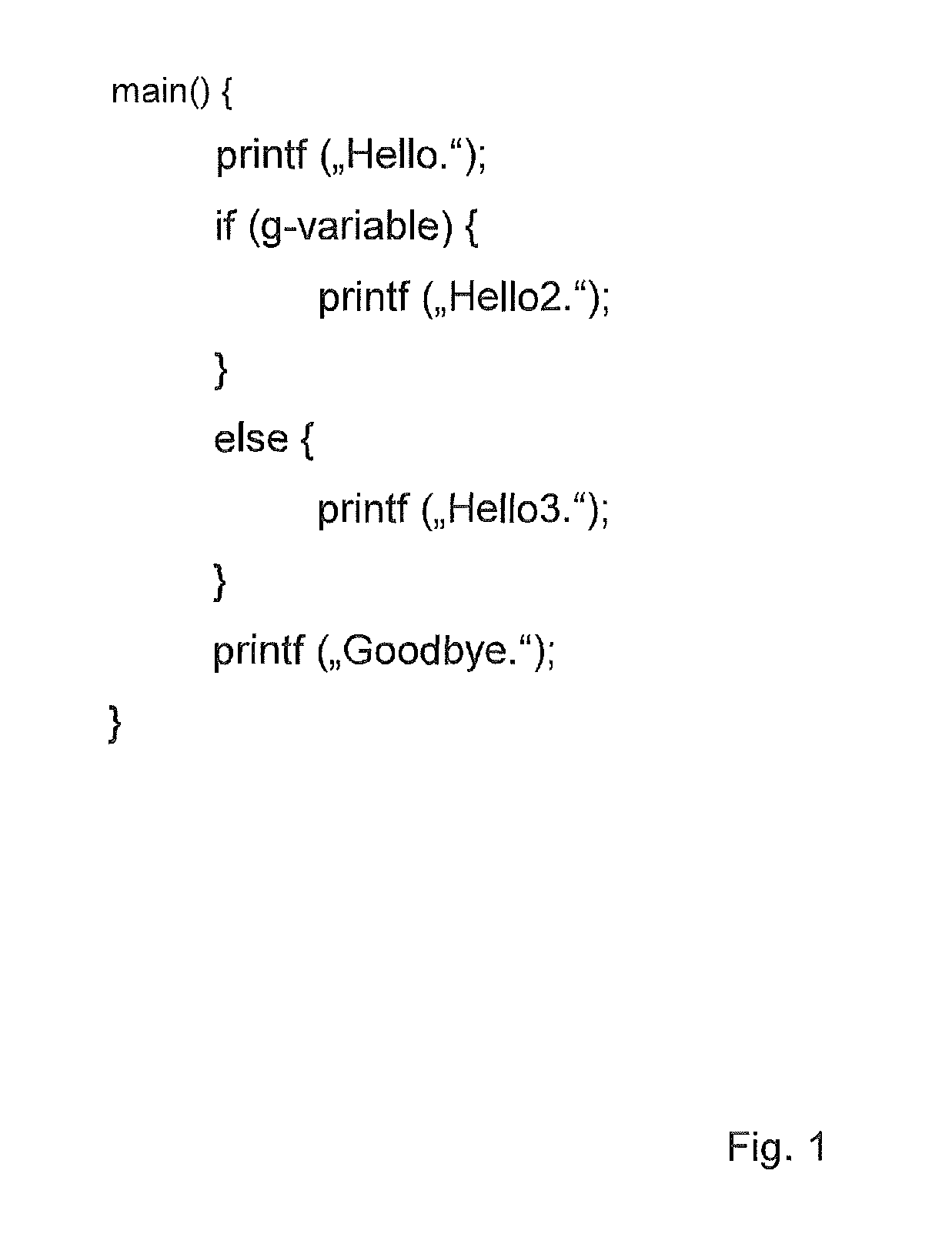Method for characterization of a computer program part
a computer program and part technology, applied in the field of computer program parts characterization, can solve the problems of not being able to establish whether computer programs have actually been produced, comparison of two assembler source texts obtained through reverse translation, and not being able to infer the identity of the original high-level language source text, etc., to achieve reliable and efficient denotation
- Summary
- Abstract
- Description
- Claims
- Application Information
AI Technical Summary
Benefits of technology
Problems solved by technology
Method used
Image
Examples
Embodiment Construction
[0029]The computer program section shown in FIG. 1 is written in the programming language C and comprises a single function, the main function main( ) of a computer program. The instructions contained in the source text prompt the following: first of all, a call to the subfunction printf outputs the text “Hello” on the screen. This is followed by a program flow instruction, which in the present case is in the form of a conditional branch of the type of an if-else instruction. The instruction if (g-variable) tests whether the variable g-variable assumes the value “TRUE” or “FALSE”. If the variable g-variable has the value “TRUE”“Hello2” is output, otherwise “Hello3” is output on the screen by means of the subfunction printf. Finally, a call to the subfunction printf outputs “Goodbye” on the screen.
[0030]FIG. 2 shows an assembler source text associated with the source text from FIG. 1. In the present case, the assembler source text has been produced as follows: first of all, the sourc...
PUM
 Login to View More
Login to View More Abstract
Description
Claims
Application Information
 Login to View More
Login to View More - R&D
- Intellectual Property
- Life Sciences
- Materials
- Tech Scout
- Unparalleled Data Quality
- Higher Quality Content
- 60% Fewer Hallucinations
Browse by: Latest US Patents, China's latest patents, Technical Efficacy Thesaurus, Application Domain, Technology Topic, Popular Technical Reports.
© 2025 PatSnap. All rights reserved.Legal|Privacy policy|Modern Slavery Act Transparency Statement|Sitemap|About US| Contact US: help@patsnap.com



